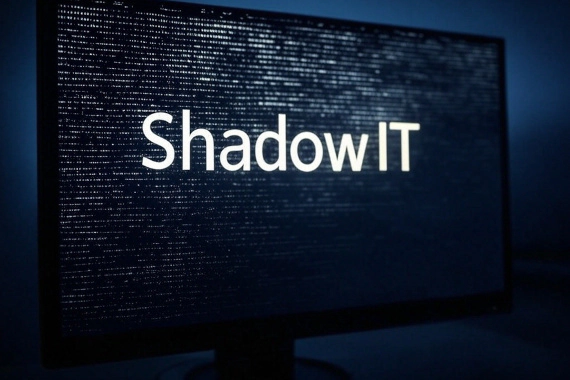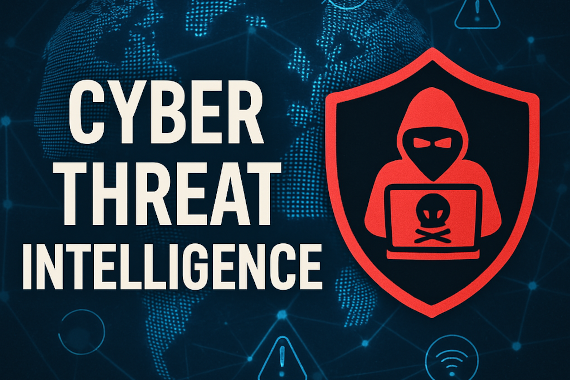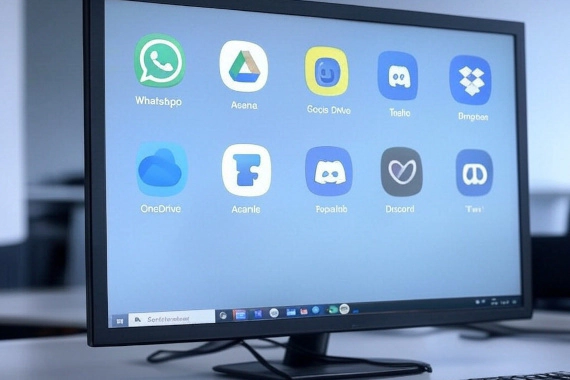
Creating a Shadow IT Policy: A Step-by-Step Guide
What is shadow IT and why is it a problem? Shadow IT refers to software that employees use for work without the …

FACT: The average time to identify a breach is around 200 days.
On the flip side, ransomware can encrypt systems in mere minutes.
Imagine losing everything before you even know you’re under attack.
But what if there was a way to gain visibility into the vulnerabilities used to access your network before an attack?
In this post, we’ll cover everything you need to know about cyber threat intelligence.
But first, let’s define what CTI actually is.
Cyber Threat Intelligence (CTI) is the process of collecting, analyzing, and sharing information about current and potential threats to an organization.
An effective CTI program transforms raw data into actionable intelligence that security teams can use to make informed decisions.
At its core, CTI helps organizations understand the “who,” “what,” “why,” and “how” of cyber threats.
It provides context around threat actors’ motivations, capabilities, and tactics.
This enables security teams to move from a reactive to a proactive security posture.
The point of CTI isn’t just to identify how an attack happened.
CTI should anticipate and help prevent attacks before they occur.
There are several reasons why threat intelligence has become a critical part of any cybersecurity strategy.
First and foremost, as previously mentioned, threat intelligence enables organizations to prevent attacks before they happen.
For example, 86% of data breaches use stolen credentials.
By simply resetting leaked credentials before they’re exploited, security teams can prevent many attacks.
Combine that with the financial impact a breach can have on your business, according to IBM, the average cost of a data breach in 2024 was USD $4.88 million.
This is a great example of how a proactive cybersecurity approach can save your company a lot of money.
Resource optimization is another important benefit.
Security teams are chronically understaffed and overwhelmed with alerts.
Threat intelligence helps prioritize threats based on their relevance and potential impact.
This allows teams to focus their resources where they matter most.
Finally, threat intelligence improves incident response capabilities.
When security incidents happen, teams with access to relevant threat intelligence can identify, contain, and remediate threats a lot faster.
This is why having visibility into attack patterns, indicators of compromise (IoCs), and threat actor tactics, techniques, and procedures (TTPs) is crucial when figuring out whether something is an actual threat or a false positive.
Effective cyber threat intelligence includes any information that can be used to help security teams identify or prevent cyber-related attacks.
This often includes some or all of the following components:
IoCs are specific, observable pieces of evidence that suggest a system, network, or environment has been breached or is under attack. Common examples of IoCs include leaked credentials, file hashes, and suspicious IP addresses. Though IoCs have a relatively short shelf life, they provide immediate value for threat detection and blocking.
TTPs refer to the patterns of behavior, methods, and operational approaches that threat actors use to execute attacks. Tactics are the high-level goals, e.g., gaining initial access or exfiltrating data. Techniques are the specific ways they achieve those goals, e.g., phishing emails or exploiting a software vulnerability. Procedures are the detailed, step-by-step workflows they follow, e.g., using a particular malware variant delivered via a watering hole attack. Unlike IoCs, which are static clues like IP addresses or file hashes, TTPs focus on the “how” and “why” of an attack. They provide a broader, more strategic view of threat actors’ playbooks.
CTI includes information about vulnerabilities (e.g. CVEs) and how they’re being weaponized. This helps security teams prioritize patching based on actual exploitation rather than just severity scores.
This is a continuous process of scanning external sources for exposed assets, like leaked credentials, session tokens, or sensitive documents. Common sources include dark web marketplaces, paste sites, hacker forums, Telegram channels, and breach datasets. Data breach monitoring provides real-time alerts to prevent attacks. Leaked data also feeds into both the IoC and TTP components, by providing highly actionable intelligence.
There are a number of teams within an organization that benefit from threat intelligence. These include:
CTI can be categorized into three main components, Strategic Intelligence, Tactical Intelligence, and Operational Intelligence. Each of these serve a unique purpose and are relevant to different teams across an organization.
The five stages of threat intelligence are a structured process used to gather, analyze, and apply information about potential cyber threats. The stages are:
While CTI is a powerful tool for improving an organization’s cybersecurity, it also comes with several challenges that need attention.
The most common issue is the sheer volume of data generated.
Organizations typically consume data from OSINT, commercial feeds, and internal logs.
This can easily overwhelm teams and lead to analysis paralysis if not properly filtered and prioritized.
This ties into another challenge: the signal-to-noise ratio.
Much of the data may be irrelevant, outdated, or false positives.
This makes it difficult to identify actionable insights without tools or expertise.
Additionally, threat intelligence can quickly become out-of-date which means that it requires constant updates and real-time monitoring.
Integration is another challenge, as different sources often use different output formats (e.g., STIX, CSV, proprietary).
This complicates efforts to consolidate data into SIEMs or other security platforms.
Finally, legal and privacy issues may limit you as well.
This is particularly true when collecting OSINT or sharing data across borders.
Regulations like the CCPA or GDPR impose constraints on how organizations can collect, process and share certain types of data.
With the growing complexity of cyber attacks, CTI tools offer a variety of functionality, from real-time threat detection to strategic planning. Below is an overview of the main types of threat intelligence tools and their primary functions.
The first major category is Threat Intelligence Platforms (TIPs), such as ThreatConnect, Anomali ThreatStream, or Recorded Future.
TIPs act as centralized hubs that aggregate data from multiple sources. These include, open-source feeds, commercial intelligence, and dark web monitoring.
Their core functionality is to automate the collection of threat data, prioritize alerts, and push actionable intelligence to security tools like SIEMs, firewalls, or endpoint detection systems.
For example, a TIP might identify a new malware campaign, match it to an organization’s vulnerabilities, and push IoCs (e.g., malicious IPs or hashes) to block them in real time.
Another important class of tools are Security Information and Event Management (SIEM) systems, like Splunk or IBM QRadar. While SIEMs primarily focus on log management and event correlation, their threat intelligence capabilities improve visibility by cross-referencing internal activity with external threat feeds.
Functions include generating contextual alerts (e.g., flagging a connection to a known command-and-control server), reducing false positives through IoC matching, and providing a unified view of threats across the network.
This makes them invaluable for security operations centers (SOCs) handling real-time incident detection and response.
Endpoint Detection and Response (EDR) tools, such as CrowdStrike Falcon or Carbon Black, also incorporate threat intelligence to protect individual devices. These tools use intelligence to detect suspicious behavior (e.g., based on TTPs from known ransomware strains), block malicious processes, and support threat hunting.
They do this by correlating endpoint data with threat intelligence.
They also can be used to automate response actions, like isolating an infected device or providing forensic data for post-incident analysis.
Vulnerability Management Tools, like Qualys or Tenable, leverage threat intelligence to prioritize patching efforts.
By integrating feeds about exploited vulnerabilities (e.g., from CVE databases or real-world attack data), these tools assess which systems are most likely to be targeted.
Their functions include risk scoring, recommending remediation steps, and tracking the threat landscape.
Malware Analysis Tools, such as VirusTotal or Joe Sandbox, focus on dissecting malicious code to extract intelligence.
They analyze files or URLs against massive databases of known threats, often supplemented by sandboxing to observe behavior in a safe environment.
Functions include identifying IoCs (e.g., file hashes, domains), uncovering TTPs, and feeding this data back into broader intelligence systems.
Finally, Dark Web Monitoring Tools, like Breachsense, specialize in gathering intelligence from various spaces where threat actors operate.
They monitor hacker forums, criminal marketplaces, Telegram channels, and paste sites for leaked data.
They provide early warning (e.g., detecting a data dump with your organization’s info), vendor risk management, and taking down sites leaking company data.
Breachsense operationalizes threat intel by providing a platform that transforms raw data from breaches and dark web sources into actionable insights.
We continuously monitor the clear and dark web for leaked credentials, session tokens, and leaked company data.
Our sources include Tor sites, hacker forums, criminal marketplaces, Telegram channels, and ransomware sites.
When a breach is detected, Breachsense enriches the data by cracking hashed passwords into plaintext (where possible), adding context, and indexing it for quick retrieval.
Security teams receive real-time alerts about compromised assets (e.g., employee credentials or customer data) which enables them to respond immediately to mitigate the risk before the data is exploited.
The platform’s API allows seamless integration with existing tools, like SIEMs, SOC workflows, or custom applications.
DevOps teams can automate remediation by feeding precise IoCs (e.g., usernames, passwords, IPs) directly into defensive systems.
Additionally, Breachsense gives security folks visibility into historical breach data which is useful in penetration testing and incident response investigations.
By combining real-time monitoring, password dehashing, and comprehensive threat intel, Breachsense helps prevent cyberattacks like account takeovers or ransomware before they happen.

What is shadow IT and why is it a problem? Shadow IT refers to software that employees use for work without the …

What are the Risks of Shadow IT When it comes to Shadow IT, there are five primary risks that it introduces into …